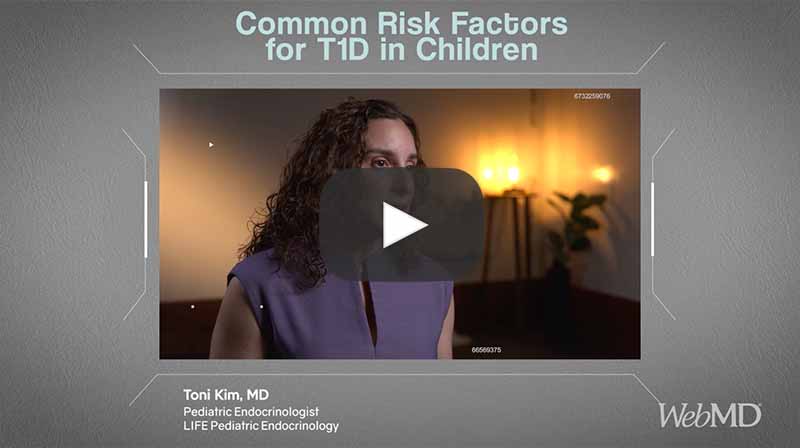
The common risk factors for type 1 diabetes in children are having a family member with type 1 diabetes, particularly a first-degree relative, or if there are many family members who have autoimmune conditions that tend to run in the same family as type 1 diabetes. The most common of these are things like Hashimoto's thyroiditis or celiac disease. Gratefully, just because one person in the family gets type 1 diabetes, it is not a sentence that the rest of the family will absolutely get type 1 diabetes.
There is an increased risk amongst first-degree family members to get type 1 diabetes that is greater than the general population.
There are certain genetic markers that have been associated with type 1 diabetes. So what that means is that there are these indicators or markers that happen on blood cells. And it has been found that with certain of these.
There are viruses that would increase one's risk for type 1 diabetes if they have an increased risk for diabetes in the first place. It has been thought that things like an enterovirus, which is a type of stomach bug, may trigger that autoimmune process. That doesn't mean to say that the moment that somebody gets an enterovirus, that they're absolutely going to go on and get type 1 diabetes. But if somebody is already predisposed and exposed to one of these viruses that somehow triggers this autoimmune process, over the course of time, there would be this loss of insulin production that leads to type 1 diabetes.
There really is no way for a family to remove the risk of their child getting type 1 diabetes because this is a genetic condition.
Certainly, there are things like the use of vitamin D and omega-3 fatty acids as being potentially protective. Maybe being gluten-light or gluten-free and avoiding processed foods may decrease that risk over time, but you cannot take away that risk of type 1 diabetes.